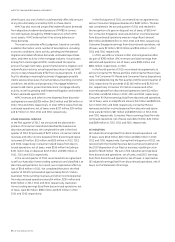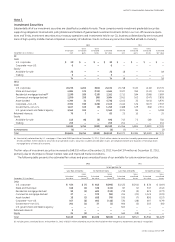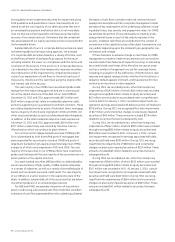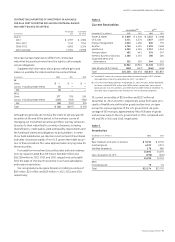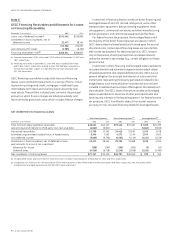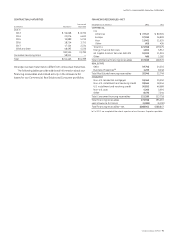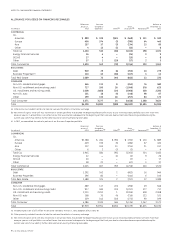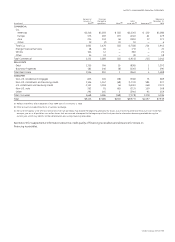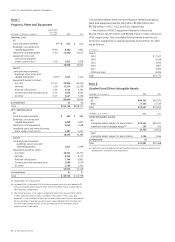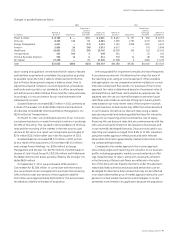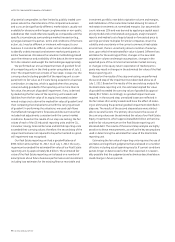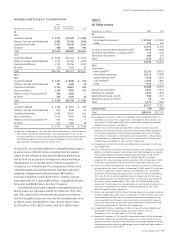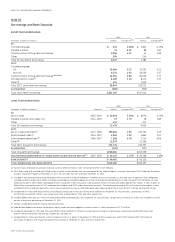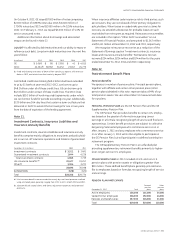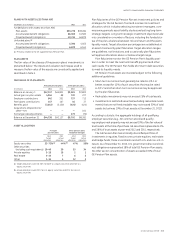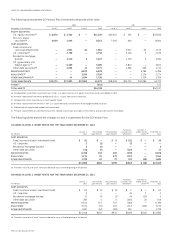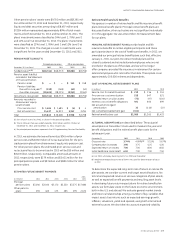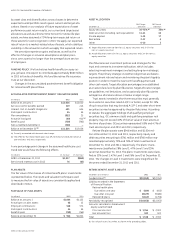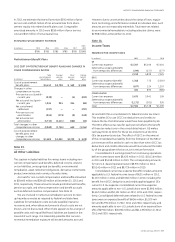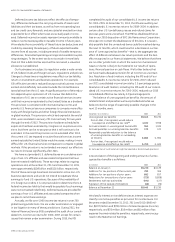GE 2012 Annual Report Download - page 100
Download and view the complete annual report
Please find page 100 of the 2012 GE annual report below. You can navigate through the pages in the report by either clicking on the pages listed below, or by using the keyword search tool below to find specific information within the annual report.98 GE 2012 ANNUAL REPORT
notes to consolidated financial statements
of potential comparables is often limited to publicly traded com-
panies where the characteristics of the comparative business
and ours can be significantly different, market data is usually not
available for divisions within larger conglomerates or non-public
subsidiaries that could otherwise qualify as comparable, and the
specific circumstances surrounding a market transaction (e.g.,
synergies between the parties, terms and conditions of the trans-
action, etc.) may be different or irrelevant with respect to our
business. It can also be difficult, under certain market conditions,
to identify orderly transactions between market participants in
similar businesses. We assess the valuation methodology based
upon the relevance and availability of the data at the time we per-
form the valuation and weight the methodologies appropriately.
We performed our annual impairment test of goodwill for all
of our reporting units in the third quarter using data as of July 1,
2012. The impairment test consists of two steps: in step one, the
carrying value (including goodwill) of the reporting unit is com-
pared with its fair value, as if it were being acquired in a business
combination; in step two, which is applied when the carrying
value (including goodwill) of the reporting unit is more than its
fair value, the amount of goodwill impairment, if any, is derived
by deducting the fair value of the reporting unit’s assets and
liabilities from the fair value of its equity (net assets) as deter-
mined in step one to derive the implied fair value of goodwill, and
then comparing that implied amount with the carrying amount
of goodwill. In performing the valuations, we used cash flows
that reflected management’s forecasts and discount rates that
included risk adjustments consistent with the current market
conditions. Based on the results of our step one testing, the fair
values of each of the GE industrial reporting units and the CLL,
Consumer, Energy Financial Services and GECAS reporting units
exceeded their carrying values; therefore, the second step of the
impairment test was not required to be performed and no good-
will impairment was recognized.
Our Real Estate reporting unit had a goodwill balance of
$926 million at December 31, 2012. As of July 1, 2012, the carry-
ing amount exceeded the estimated fair value of our Real Estate
reporting unit by approximately $1.8 billion. The estimated fair
value of the Real Estate reporting unit is based on a number of
assumptions about future business performance and investment,
including loss estimates for the existing finance receivable and
investment portfolio, new debt origination volume and margins,
and stabilization of the real estate market allowing for sales of
real estate investments at normalized margins. Our assumed dis-
count rate was 11% and was derived by applying a capital asset
pricing model and corroborated using equity analyst research
reports and implied cost of equity based on forecasted price to
earnings per share multiples for similar companies. Given the
volatility and uncertainty in the current commercial real estate
environment, there is uncertainty about a number of assump-
tions upon which the estimated fair value is based. Different loss
estimates for the existing portfolio, changes in the new debt
origination volume and margin assumptions, changes in the
expected pace of the commercial real estate market recovery,
or changes in the equity return expectation of market partici-
pants may result in changes in the estimated fair value of the Real
Estate reporting unit.
Based on the results of the step one testing, we performed
the second step of the impairment test described above as of
July 1, 2012. Based on the results of the second step analysis for
the Real Estate reporting unit, the estimated implied fair value
of goodwill exceeded the carrying value of goodwill by approxi-
mately $1.7 billion. Accordingly, no goodwill impairment was
required. In the second step, unrealized losses are reflected in
the fair values of an entity’s assets and have the effect of reduc-
ing or eliminating the potential goodwill impairment identified in
step one. The results of the second step analysis were attribut-
able to several factors. The primary drivers were the excess of
the carrying value over the estimated fair value of our Real Estate
Equity Investments, which approximated $2.6 billion at that time,
and the fair value premium on the Real Estate reporting unit
allocated debt. The results of the second step analysis are highly
sensitive to these measurements, as well as the key assumptions
used in determining the estimated fair value of the Real Estate
reporting unit.
Estimating the fair value of reporting units requires the use of
estimates and significant judgments that are based on a number
of factors including actual operating results. If current conditions
persist longer or deteriorate further than expected, it is reason-
ably possible that the judgments and estimates described above
could change in future periods.


